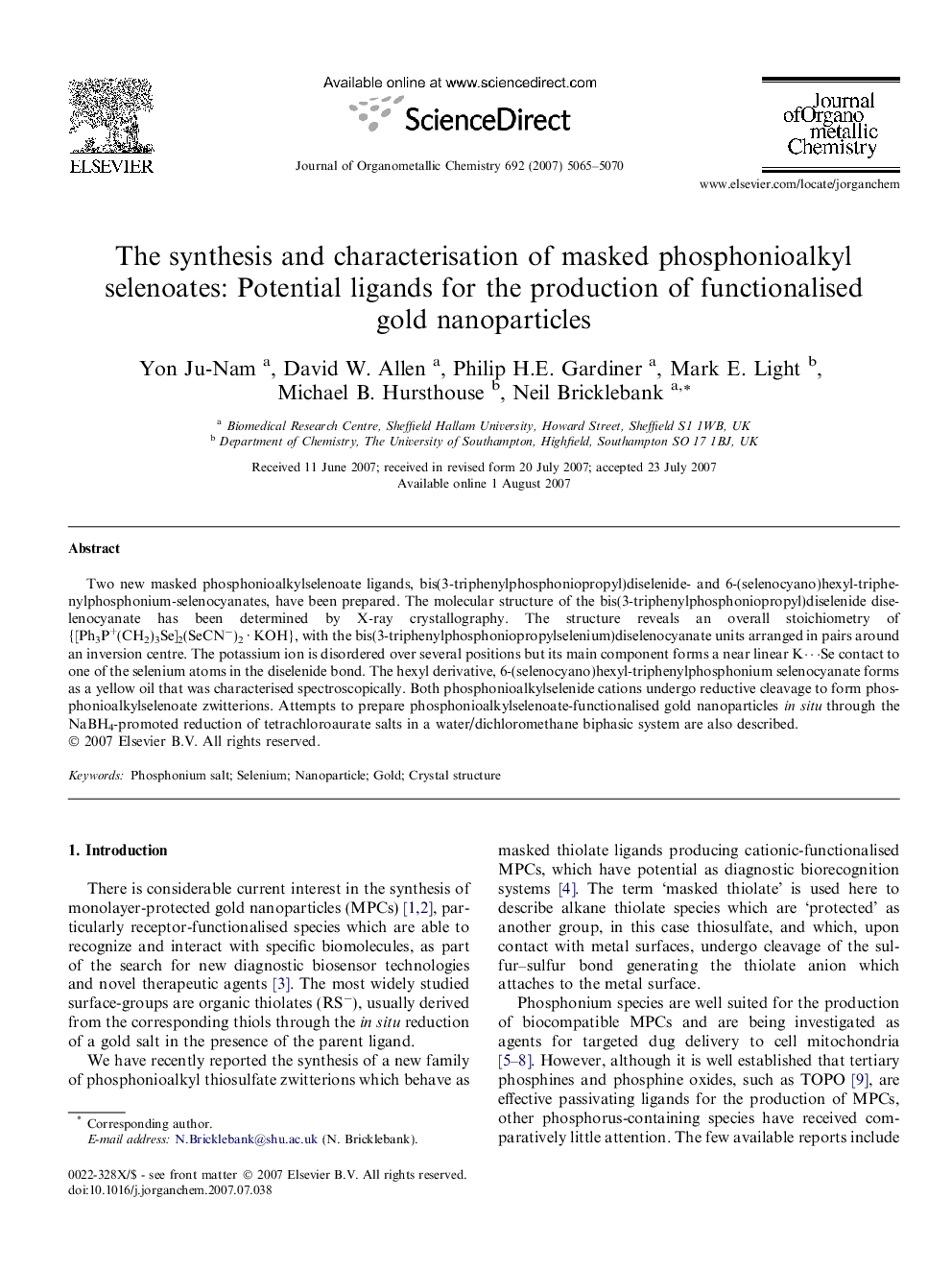| Article ID | Journal | Published Year | Pages | File Type |
|---|---|---|---|---|
| 1328182 | Journal of Organometallic Chemistry | 2007 | 6 Pages |
Two new masked phosphonioalkylselenoate ligands, bis(3-triphenylphosphoniopropyl)diselenide- and 6-(selenocyano)hexyl-triphenylphosphonium-selenocyanates, have been prepared. The molecular structure of the bis(3-triphenylphosphoniopropyl)diselenide diselenocyanate has been determined by X-ray crystallography. The structure reveals an overall stoichiometry of {[Ph3P+(CH2)3Se]2(SeCN−)2 · KOH}, with the bis(3-triphenylphosphoniopropylselenium)diselenocyanate units arranged in pairs around an inversion centre. The potassium ion is disordered over several positions but its main component forms a near linear K⋯Se contact to one of the selenium atoms in the diselenide bond. The hexyl derivative, 6-(selenocyano)hexyl-triphenylphosphonium selenocyanate forms as a yellow oil that was characterised spectroscopically. Both phosphonioalkylselenide cations undergo reductive cleavage to form phosphonioalkylselenoate zwitterions. Attempts to prepare phosphonioalkylselenoate-functionalised gold nanoparticles in situ through the NaBH4-promoted reduction of tetrachloroaurate salts in a water/dichloromethane biphasic system are also described.
Graphical abstractTwo new ligands, bis(3-triphenylphosphoniopropyl)diselenide- and 6-(selenocyano)hexyl-triphenylphosphonium-selenocyanates, which have the potential to act as ‘masked selenoates’ have been prepared and characterised, including the X-ray crystal structure of bis(3-triphenylphosphoniopropyl)diselenide diselenocyanate. Attempts to prepare phosphonioalkylselenoate-functionalised gold nanoparticles in situ through the NaBH4-promoted reduction of tetrachloroaurate salts are also reported.Figure optionsDownload full-size imageDownload as PowerPoint slide
